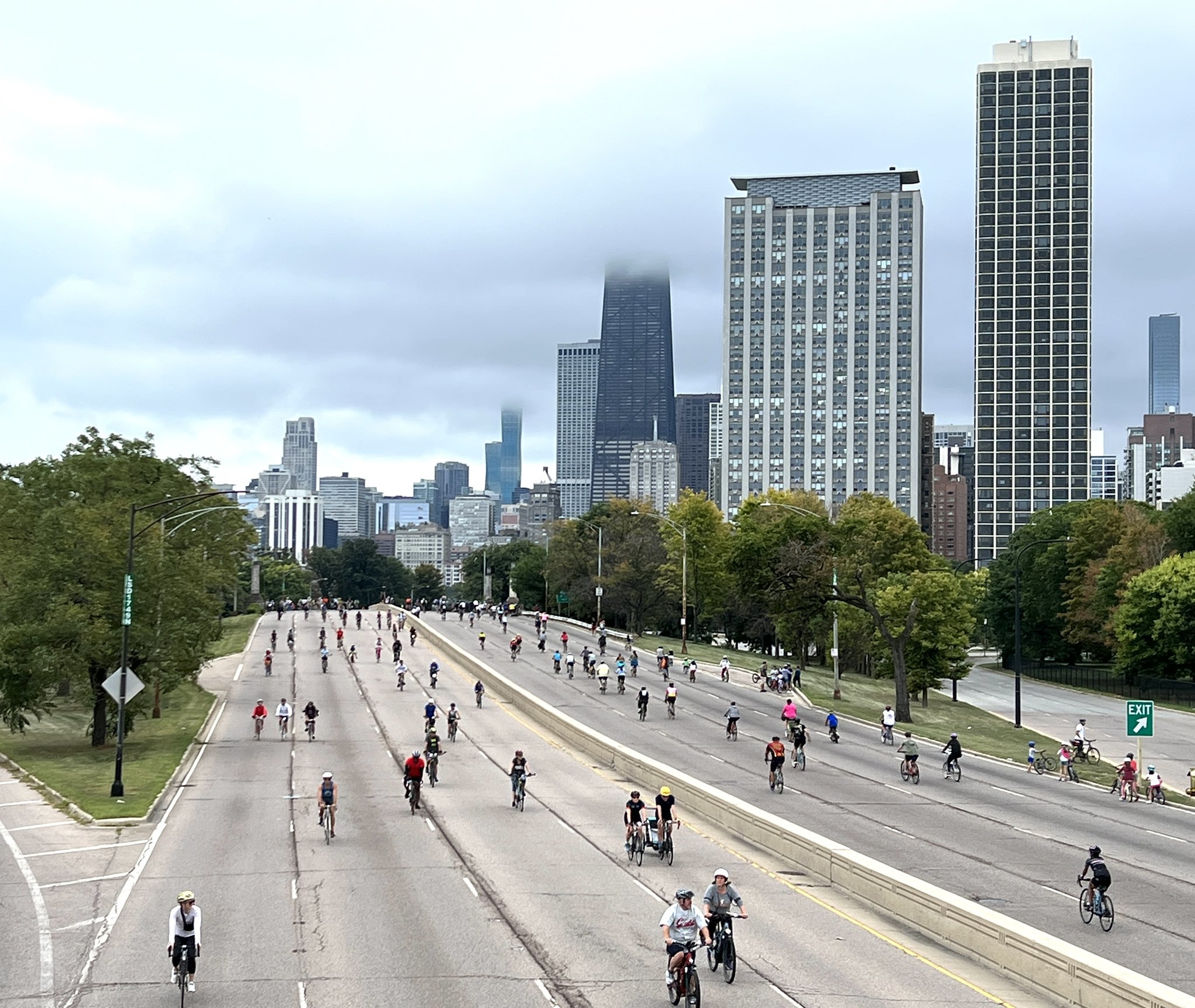This piece is syndicated from the Chicago Reader and sponsored by The Darrell R. Windle Charitable Fund and Polo Inn.
The Chicago Reader is running a six-part series talking with local sustainable transportation organizations that are working to make the Chicago area a safer, more just, more efficient, and more fun place to get around on foot, bike, transit, and other green modes.
We’re starting with the Active Transportation Alliance. Founded in 1985 as the Chicagoland Bicycle Federation, the ATA works to improve conditions and increase opportunities for bicycling, walking and transit. I recently caught up with the group’s managing director of advocacy Jim Merrell, to discuss some of the challenges facing Chicagoland when it comes to transportation equity.
“We still have a very car-centric policy regime in the area, where cars are still king,” Merrell said. “Prioritizing car traffic over other considerations, such as safety and quality of life, unfortunately continues to be a big driving force for a lot of decisions that are being made.”
“Any project that expands road capacity is going to lead to more driving,” Merrell noted. “That’s inherently an inequitable outcome when it comes to who bears the burden of that additional driving, its impact on climate and air quality. . . . When we talk about equity, the big picture is breaking the cycle of car-oriented policy at all levels of government.”
So if we can’t beat traffic jams through highway expansion, how can we help people get where they need to go more efficiently? One of ATA’s key campaigns is to improve bus service—a non-sexy but crucial mode—especially for Black, Latino, and lower-income residents.Well-enforced bus lanes help provide faster, more reliable service. But while New York has 138 miles of these facilities and Los Angeles has 107, Chicago has a measly 11 miles—which are often disrespected by motorists.
CTA is working on the Better Streets for Buses plan to identify routes for upgrades. “But we want to see a bolder vision for how are we actually going to build a network of dedicated bus lanes,” Merrell noted. ATA is calling for innovations like having customers pay their fares before the bus shows up, which means less “dwell time” at stops and shorter trips.
And then there’s biking, ATA’s bread and butter for almost four decades. After bike fatalities spiked during the pandemic, Chicago recently announced plans to add concrete barriers to all existing protected bike lanes. Merrell said that’s great, as long the layout is wheelchair-friendly, and the lanes are kept clear of debris and snow.
“But the bigger issue is, how do we build out the protected bike lane network in a way that’s really going to touch every neighborhood and function as a citywide system, and not just a piecemeal one?” Merrell noted. “We’d love to see that happen, so we’re looking forward to the upcoming municipal election, and hearing what the candidates’ visions are for a citywide network of connected and protected bikeways.”





